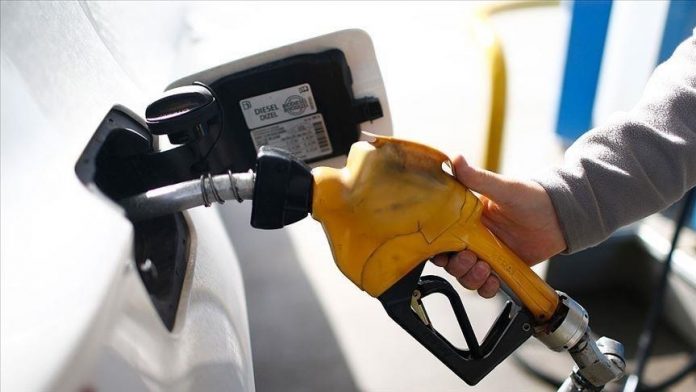Gasoline prices in the US have climbed to their highest level in almost 10 years, according to data compiled by Anadolu Agency.
The national average stood at $3.837 a gallon for regular gasoline, its highest since September 2012, showed the data by American Automobile Association (AAA).
The highest price was seen in the state of California, where it stood at $4.422.
This was followed by Hawaii at $4.66 and Nevada and Oregon near $4.28.
Relatively cheaper rates were seen in southeastern states of South Carolina, Georgia, and Florida – all below $3.70 a gallon.
The average gasoline price marked a 3.6% increase from a week ago when it was $3.572, while it posted a gain of 12.1% from a month ago, when it stood at $3.423.
On an annual basis, the average gasoline price jumped a whopping 39.8% from $2.745 per gallon a year ago.
Headache for consumers, and Biden
Rising prices have become a major issue for American consumers.
Although the administration of US President Joe Biden has repeatedly said it is fighting high gasoline prices, releasing crude oil from strategic petroleum reserves does not seem to have helped.
Crude prices have been on the rise since the economy largely opened up after being shut down by the coronavirus pandemic, pushing up global oil demand, but supply has been lagging.
International oil benchmark Brent crude soared Thursday to $119.78, marking its highest level since May 2, 2012.
American benchmark West Texas Intermediate jumped to $116.50 – its highest since Sept. 2, 2008.
Oil prices etched out a parabola over the last week with risks amid Russia’s war on Ukraine.
The US and its allies’ sanctions on Moscow have triggered fears that they may soon by extended to include the Russian oil sector.
The US Commerce Department took the first step Friday when it announced measures targeting Russia’s oil refining sector with export controls.
One of the measures builds on existing US restrictions put in place on the Russian deepwater oil and gas exploration and extraction industries in 2014 when Russia annexed Crimea. It imposes restrictions on a wide variety of items necessary for refining oil.
Russia is one of the three major oil-producing and exporting countries in the world, along with the US and Saudi Arabia.
It is also a member of OPEC+, which includes Saudi-led OPEC and its allies.
OPEC+ met Wednesday and agreed to stick to their plan of ramping up crude production by 400,000 barrels per day through April.
A prolonged war in Ukraine, or its spillover to other regions, in addition to sanctions on the Russian oil sector and exports, could push crude oil and gasoline prices even higher.
Source Anadolu Agency

